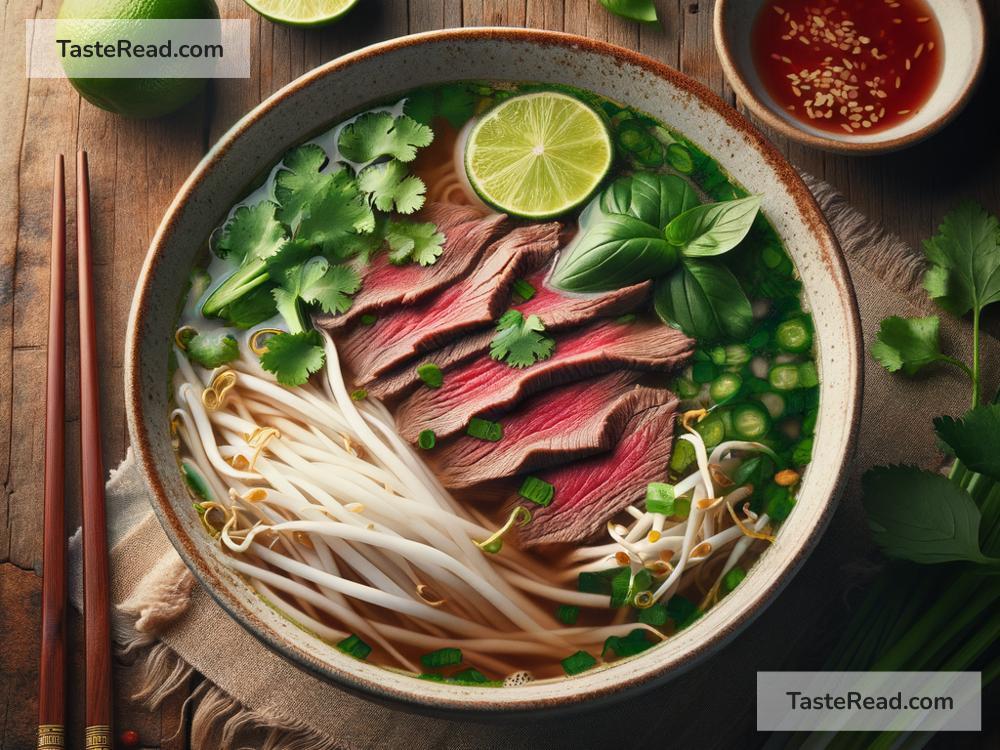The Story of Vietnamese Pho: A Journey Through History
Pho, a delicious and aromatic noodle soup, is one of Vietnam’s most famous dishes. Loved by people around the world, pho is more than just food—it’s a dish filled with history, culture, and tradition. But where does pho come from? How did it become such an iconic dish? Let’s take a journey through time to discover the fascinating evolution of Vietnamese pho.
Early Beginnings: A Blend of French and Vietnamese Influences
Vietnam’s history is shaped by its interactions with other cultures, so it’s no surprise that pho has a mix of influences. Surprisingly, pho may have been inspired by French cooking during the late 19th and early 20th centuries, when Vietnam was part of French Indochina.
The French introduced beef to Vietnamese cuisine, as cows were traditionally used for farming, not eating, in Vietnam. French dishes like pot-au-feu (a beef stew) might have influenced the broth of pho. The word “pho” itself might even come from “feu” (the French word for fire), though this is still debated.
At the same time, local traditions played a big role. Vietnamese cooks blended the French beef broth with their own flavors—adding spices like star anise, cinnamon, and ginger, as well as rice noodles, which were already a staple in Vietnamese cooking. This mix of French and Vietnamese elements laid the foundation for what we now call pho.
The Birth of Pho in Northern Vietnam
Pho is believed to have originated in northern Vietnam, particularly around Hanoi, in the early 20th century. The earliest versions of pho were simple: beef broth, rice noodles, and a few garnishings like green onions. It was sold by street vendors carrying portable kitchens on their shoulders, and people could enjoy a hot bowl of pho anytime, anywhere.
These early bowls of pho were different from the pho we know today. They didn’t include many modern additions like bean sprouts, hoisin sauce, or a variety of herbs. Yet even in its simplest form, pho quickly became popular. Its rich flavors and comforting warmth made it a favorite among workers looking for an affordable, filling meal.
Spreading to Southern Vietnam: New Ingredients and Styles
By the mid-20th century, pho began spreading from northern Vietnam to the south. This movement accelerated after 1954, when Vietnam was divided into North and South following the Geneva Accords. Many northerners moved south, bringing their love for pho with them.
Southern Vietnam transformed pho in exciting ways. Southerners added more fresh herbs like cilantro, Thai basil, and mint, as well as bean sprouts and lime wedges. They also introduced side sauces like hoisin and chili sauce, allowing people to customize the flavor of their pho. Southern pho tended to have a sweeter and richer broth, reflecting the region’s preference for bold flavors.
The southern version of pho became just as beloved as the northern style, and today both versions are celebrated across Vietnam.
A Symbol of Resilience During Difficult Times
Pho isn’t just a dish—it’s a symbol of Vietnam’s resilience. Throughout the country’s struggles, including war and economic hardships, pho remained a part of daily life. During the Vietnam War (1955–1975), resources were limited, and beef was often scarce, leading people to create versions of pho with chicken (pho ga) or whatever ingredients they had on hand.
Even during tough times, pho brought comfort to Vietnamese people. It was a reminder of tradition, family, and home. After the war, the dish continued to evolve as Vietnam rebuilt itself, becoming a cultural treasure that united the country.
Pho Goes Global: A Taste of Vietnam Around the World
In the years following the Vietnam War, millions of Vietnamese people emigrated to other countries, bringing their food traditions with them. Pho quickly became a favorite in Vietnamese communities abroad, and non-Vietnamese people fell in love with it too.
Restaurants serving pho began popping up around the world, especially in places like the United States, Canada, and Australia. Today, pho is a global phenomenon, and almost anyone can find a steaming bowl of this noodle soup near them—even if they’ve never been to Vietnam.
As pho spread across the globe, chefs started adding their own twists to the dish. Some replaced rice noodles with zucchini noodles for a healthier option, while others experimented with fusion flavors, like pho-inspired ramen. Despite these changes, pho remains true to its roots, always maintaining the essence of Vietnamese cuisine.
Modern-Day Pho: A Dish for All Seasons
Today, pho is more than a meal—it’s a cultural icon. In Vietnam, it’s eaten for breakfast, lunch, or dinner, often from trusted street vendors or small family-run restaurants. Each bowl tells a story, with its fragrant broth, tender meat, soft noodles, and vibrant herbs.
Pho has also become a symbol of Vietnamese identity. It’s a dish that connects generations, reminding people of their heritage while continuing to evolve with modern tastes. Whether served in a bustling Hanoi market, a chic Ho Chi Minh City restaurant, or a cozy kitchen in New York, pho carries a piece of Vietnam’s heart.
Conclusion: Pho as a Celebration of Culture
The history of pho is a story of adaptability and creativity. From its humble beginnings in northern Vietnam to its widespread fame across the globe, pho has remained a beloved celebration of Vietnamese culture. With every bite, we taste the flavors of tradition, resilience, and innovation.
So, the next time you enjoy a bowl of pho, take a moment to appreciate its journey—a journey that spans over a century, connects millions of people, and continues to evolve. Whether you prefer northern-style pho or southern-style pho, one thing is certain: pho is food for the soul, and it will always bring people together.


